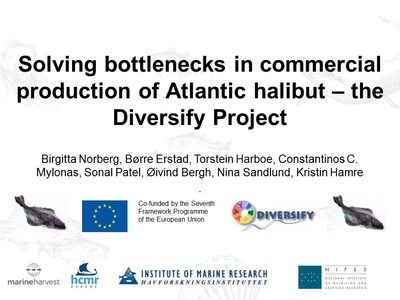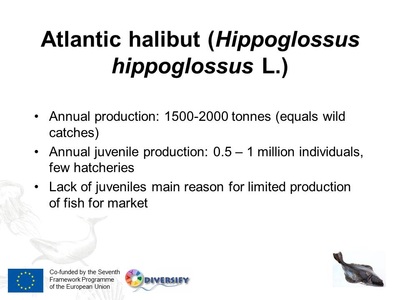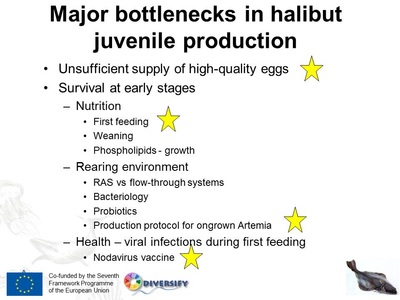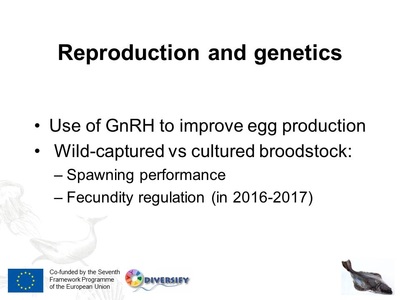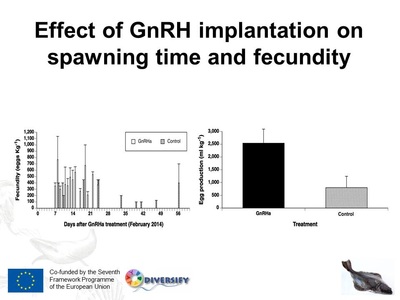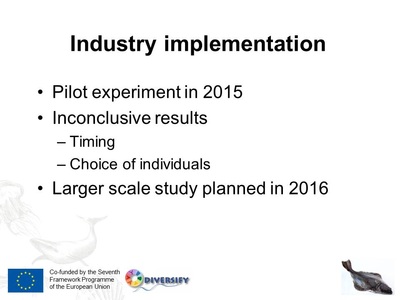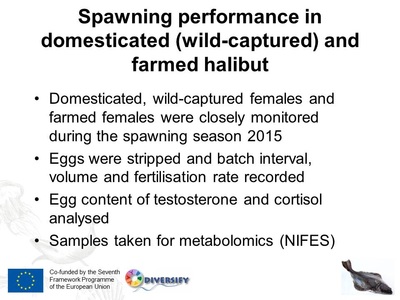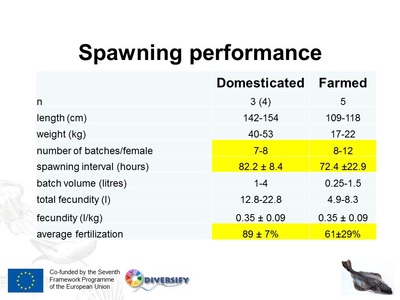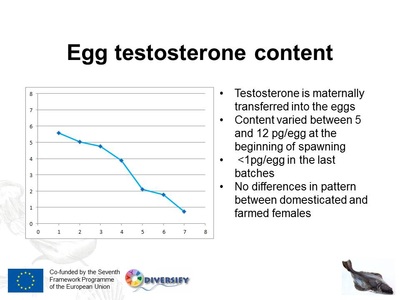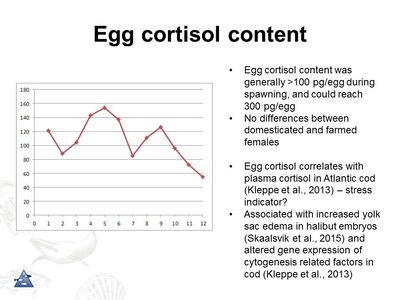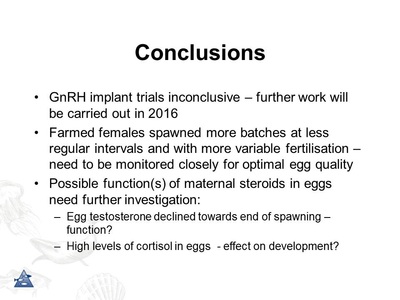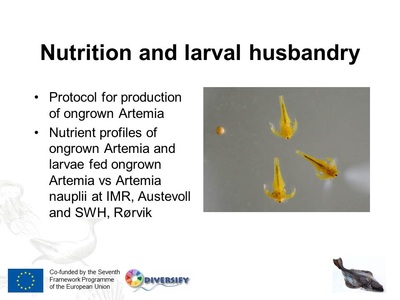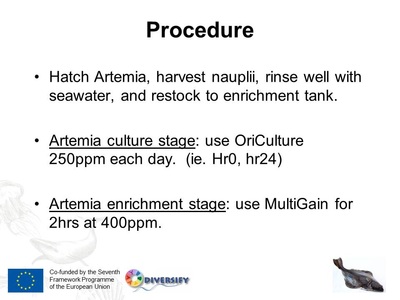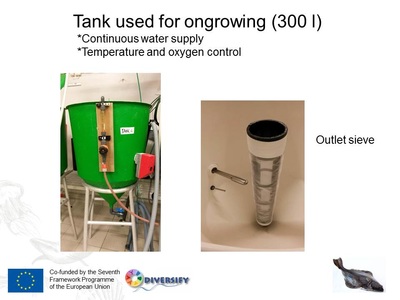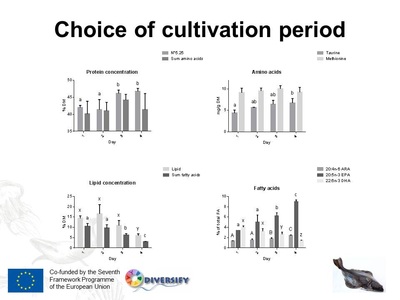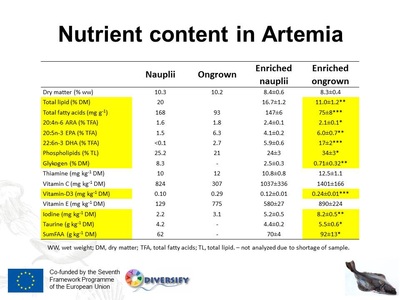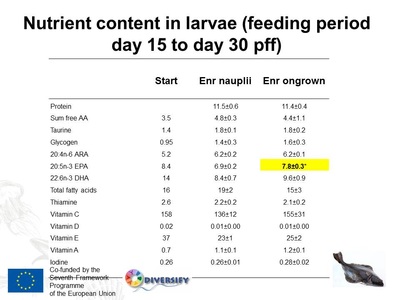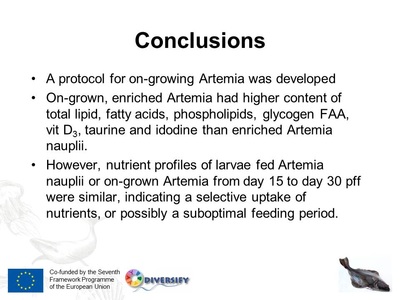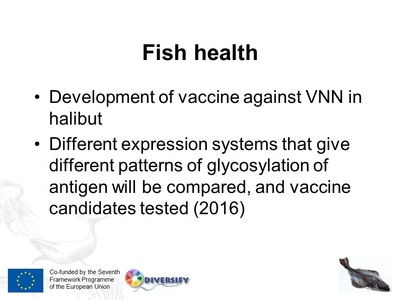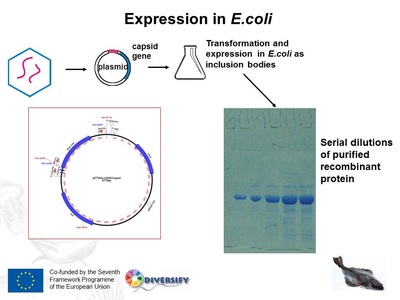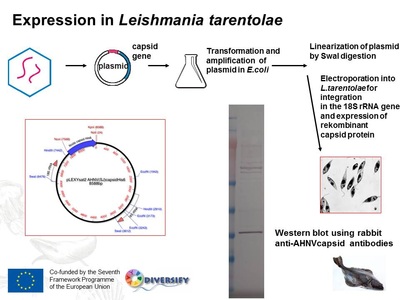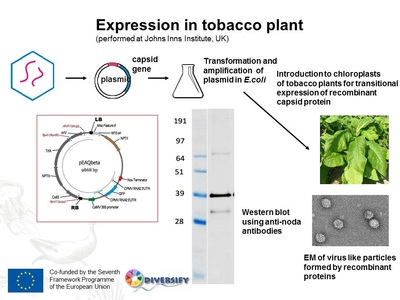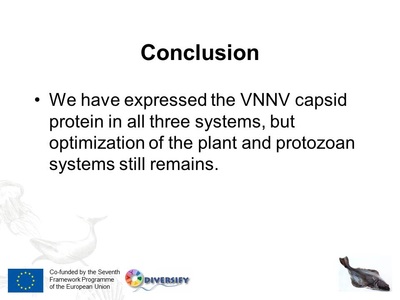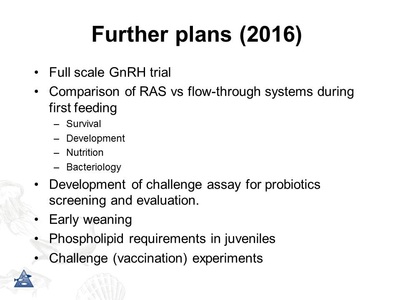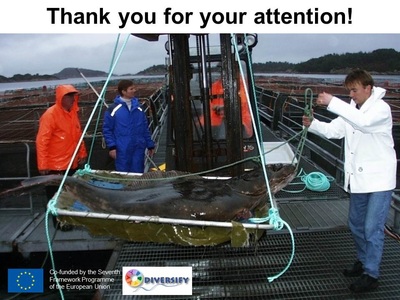AE2015 rotterdam special session diversify
During the Aquaculture Europe 2015 conference, DIVERSIFY project had a special session day, Thursday 22th October. Major achivements in halibut culture obtained during 2014 and 2015 were presented by the species leader Birgitta Norberg, with the results from the work of Børre Erstad, Torstein Harboe, Constantinos C. Mylonas, Sonal Patel, Øivind Bergh, Nina Sandlund, Kristin Hamre.
justification for the selection of atlantic halibut
The Atlantic halibut is the world’s largest flatfish and can attain a weight of over 300 Kg. It is highly prized at markets worldwide, but availability of wild Atlantic halibut is decreasing and the fish is classified as endangered on the IUCN red list. Last year a complete ban was imposed on Icelandic fisheries, and stocks along the Norwegian coast are declining and under strict regulation. This has led to a higher market demand for Atlantic halibut than cannot be met by fisheries alone. Cultured Atlantic halibut has an excellent reputation, but is rarely available outside specialty restaurants due to low annual production. The Atlantic halibut is a semi-fat fish rich in omega-3 fatty acids, with a characteristic flaky white meat with few bones. In terms of product diversification, Atlantic halibut is traditionally marketed as large fish steaks or cutlets. It can be smoked or marinated in the typical Scandinavian style. These characteristics led to the inclusion of Atlantic halibut in DIVERSIFY, as a great candidate for fish species and product diversification in European aquaculture.
Research and cultivation efforts of Atlantic halibut started in the 1980’s, but the total annual production of cultured Atlantic halibut is still only ~1600 t (Norwegian Directorate of Fisheries). In Europe, Atlantic halibut farms exist in Norway and Scotland. The desired market size is 5-10 kg and production time is currently 4-5 yrs. Despite a significant research effort between 1985 and 2000, the complicated life cycle of Atlantic halibut made aquaculture progress slow, and very little research funding has been allocated thereafter. However, during this time slow but steady progress has been made by the farmers in order to improve production stability, and interest in cage culture is growing. The remaining bottlenecks for increased and stable production are related to a steady supply of fry and a need to decrease the production time. The latter may be achieved with the recent establishment of "all female" juvenile production (Hendry et al., 2003; Babiak et al., 2012). This is expected to have a major impact on production time as females grow faster and mature later –80% of slaughtered fish <5 kg are mature males (P22 SWH, production statistics). DIVERSIFY will address these important bottlenecks with a coordinated research effort in reproduction, and larval nutrition and husbandry.
Research and cultivation efforts of Atlantic halibut started in the 1980’s, but the total annual production of cultured Atlantic halibut is still only ~1600 t (Norwegian Directorate of Fisheries). In Europe, Atlantic halibut farms exist in Norway and Scotland. The desired market size is 5-10 kg and production time is currently 4-5 yrs. Despite a significant research effort between 1985 and 2000, the complicated life cycle of Atlantic halibut made aquaculture progress slow, and very little research funding has been allocated thereafter. However, during this time slow but steady progress has been made by the farmers in order to improve production stability, and interest in cage culture is growing. The remaining bottlenecks for increased and stable production are related to a steady supply of fry and a need to decrease the production time. The latter may be achieved with the recent establishment of "all female" juvenile production (Hendry et al., 2003; Babiak et al., 2012). This is expected to have a major impact on production time as females grow faster and mature later –80% of slaughtered fish <5 kg are mature males (P22 SWH, production statistics). DIVERSIFY will address these important bottlenecks with a coordinated research effort in reproduction, and larval nutrition and husbandry.

